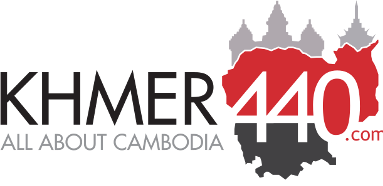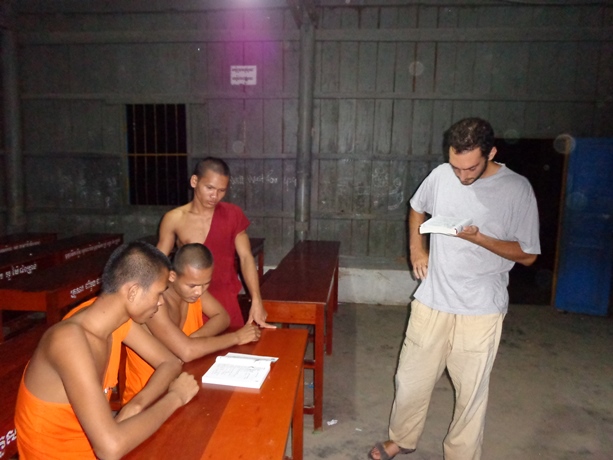Eastern Approaches 5: Village Number Nine
 Some things will always be a mystery; why the Germans decided to be led by a man with a stupid moustache and an obvious case of Napoleon syndrome, why haggis is considered a foodstuff worthy of devotion, why some people think it is somehow clever or amusing to wear a “Danger Mines” T-shirt in Cambodia but for me there will always be mystery surrounding Village Number Nine in Mondulkiri Province.
Some things will always be a mystery; why the Germans decided to be led by a man with a stupid moustache and an obvious case of Napoleon syndrome, why haggis is considered a foodstuff worthy of devotion, why some people think it is somehow clever or amusing to wear a “Danger Mines” T-shirt in Cambodia but for me there will always be mystery surrounding Village Number Nine in Mondulkiri Province.
”Why” you might well ask.
Well I don’t rightly know but I will challenge anyone to a duel with sharpened dueling sticks, to the death no less, for not letting me wonder eternally in the mystery.
Village Number Nine is situated on something of a crossroads. The roads, presumably, head North, South, East and West or some other variation. They are roads of sand, some hard packed and others loose, and all eternally irritating to a rider of motorcycles. I am not sure what the people of Koneck actually do to earn a living. There don”t seem to be many rice fields and the sand does not look too attractive to farming. We met one hardy soul who had relocated his family from Bantey Meanchey at the suggestion of the government.
Saying Village Number Nine is isolated is rather like saying that the present President of the United States is not the sharpest tool in the shed or that the voice of legendary troubadour Mr. Robert Dylan is a touch raspy. Never were truer words said.
Having found lodgings and stabled our bikes I headed out to try and understand the true character of the town. Calum joined me as he was bored with buggery and fruit picking,such were the pursuits of his delightful wife Gwyneth that day.
The town was abuzz as there was a wedding in its environs. Ladies, young and old,strolled too and thro in silken hue. Men stumbled back from their hosts in alcoholic stupors. We carried on past the wedding home and came across a peculiar military encampment.
There were a number of old colonial buildings, shattered by decades of neglect and in some instances, war. Rarely, and in Cambodia this is something significant, have I found a place to be so eerie. We found bullets had strafed one building and the old French tiles were pockmarked with what appeared to be mortar fragments. Another building still had the blue stenciling of the UN on its walls.
Eventually we found a man who explained that the compound had seen a lot of fighting between Khmer Rouge and Lon Nol troops. The area was then abandoned until the United Nations used some of the buildings before elections in the early 1990″s. The sense of history was heavy. I felt I could touch it. Later we talked to a woman who called us over from under her house. She was about forty and had fourteen children. Her husband lay,exhausted, in a hammock. She was chatty but after a while it appeared that she was keen to sell daughters number nine and ten. We got chatting to her mother, a wizened old raisin of about sixty-five. I started talking about politics, stupid perhaps, but there we are.
”So what do you think of Cambodia these days,” I asked.
”I like Hun Sen. He got rid of the Khmer Rouge. They didn’t leave Koneck until 1981 though. We were too far from Sen Monorom and Banlung for the army to come and rescue us.”
”What was it like back then,” I prodded.
”I remember it was very hard. We were all afraid. Especially when the big planes bombed us. Many in the village were killed. My husband decided to join the revolution and fight the corrupt government. He was killed,” she answered. There was no trace of sadness but you could sense the weight of her words.
And so it was. We continued talking and enjoying the shade offered by the area under the house. Eventually, we decided to return to our lodgings. We bade a fond farewell to the old lady, her daughter and the hordes of grandchildren.
Upon reaching home we set out for foodstuffs and beers. We discovered that the restaurants in town were fairly limited so we ate at the only one, which had a TV (not hard to find given that there are only two TV?s in the whole of Village Number Nine).
After dinner we spent an amusing evening comparing chest hair, attempting to dislodge bees (from the large bees nest that hung next door to our bedroom) with our testicles and comparing the works of various obscure Norwegian poets. Lars Norstroon being my favourite on that particular evening.
Village Number Nine had been our resting place for only one night but would remain with me for a long time to come. It was a place of conversation, history, sand and courage. Long Live Village Number Nine, may you see it too sometime.
Next up: The trail to Lumphat, drunken ladies and our arrival in Banlung.
Vox



